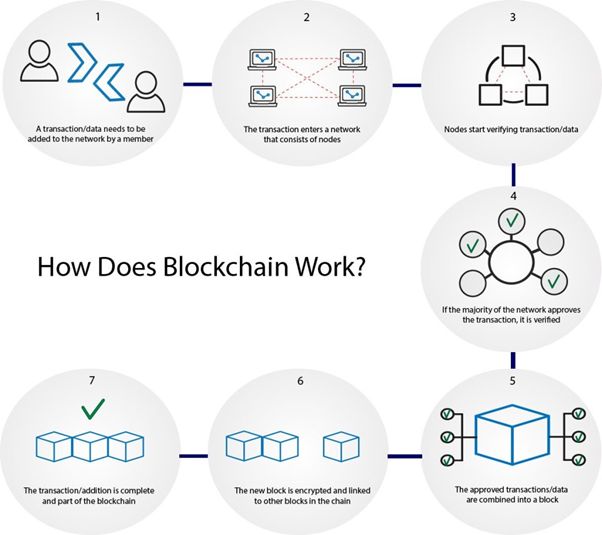- within Employment and HR and Privacy topic(s)
- with readers working within the Pharmaceuticals & BioTech industries
The Qatar Communication Regulatory Authority ("CRA") recently posted a public consultation document seeking input and comments from relevant stakeholders and other parties regarding its national blockchain blueprint ("Blueprint"). The Blueprint identifies the key elements and requirements of the technology, proposals for the underlying regulatory foundation, the adoption framework, and the ways in which the technology may be adopted. It also provides a set of recommendations for creating a supportive environment for creativity and innovation.
Issuance of the Blueprint follows from the Qatar Investment Authority's ("QIA") recent statement that while it had no interest in investing in cryptocurrencies, it was exploring opportunities in blockchain technology ("blockchain"). The QIA statement was interesting because to many people, cryptocurrency and blockchain are inextricably linked, and since the Qatar Central Bank and the Qatar Financial Centre Regulatory Authority had previously issued circulars and press releases clarifying that dealing in virtual assets (i.e. cryptocurrencies) was prohibited in Qatar, the Blueprint and QIA statement may have seemed to some as being at odds with regulators.
This article seeks to clarify the nature of blockchain, the potential practical uses and benefits of utilising blockchain, and other associated considerations.
What is blockchain?
Blockchain is a permanent, immutable, decentralised ledger that records data, transactions, assets, and documents in sequential order using encryption technology. 1 The ledger itself is shared among various nodes, or members, with no centralised storage location. Data and transactions are stored in a series of blocks that form part of a sequential chain, with each new block cryptographically linked to the previous block in the chain. 2 It is possible to have multiple blockchains in an organisation, and member access can be controlled through the use of varying permission levels. Additionally, blockchains may be public (open to all), private (limited access, membership and participation), or a combination of the two (publicly available but with different permission thresholds for each node). 3

An example of a typical blockchain transaction may better clarify the preceding paragraph. An employee in a shipping company wants to upload data to the company's blockchain. The employee initiates the transaction by sending an upload request to the blockchain network. The data is then shared among the various nodes in the blockchain network, which then work to verify the data. If a majority of the nodes on the network verify the transaction (e.g. an inventory upload), the data is then added to a block of other data. This new data block is then linked in sequential order to the previous block in the chain through a cryptographic hashing protocol. 4
On the surface this example transaction probably looks like a data upload to any other network or database. However, there are several important differences between blockchains and traditional network databases.
A blockchain is not stored in a centralised location, meaning that if something happens to a node (e.g. an office mainframe is destroyed by fire), the blockchain data is safely stored with the remaining nodes on the blockchain network creating a redundant system of data records.
Furthermore, each data block is time-stamped when it is added to the blockchain, and all of the node ledgers on the blockchain network are immediately updated with the new transaction data block. Because the new block is cryptographically linked to the preceding block, any modification of a block's data would result in incorrect sequencing of the succeeding blocks, thereby eliminating the possibility of data tampering by a hacker or other bad actor.
No Cryptocurrency Involved
As noted above many people mistakenly identify cryptocurrencies and blockchains as one and the same. This is largely due to cryptocurrencies being one of the earliest adopters of the technology. However, while most cryptocurrencies wholly rely on blockchains to verify and record transactions between members of a public network (e.g. the Bitcoin blockchain), blockchains can verify and record any information, not just cryptocurrency transactions.
Practical Applications For Qatar
Although virtual asset transactions are prohibited in Qatar, both the QIA and CRA have expressed interest in developing widespread blockchain use for other purposes. Private sector companies are also considering ways to integrate blockchain into their distribution channels, networks, and data centres as the use of the technology itself is not prohibited.
Medical
The COVID-19 outbreak caught the world by surprise and quickly revealed the information sharing inadequacies of the medical sector. 5 Worse still, during the early days of the outbreak there was a proliferation of misinformation circulating that ultimately hampered the effective management of the virus' spread. Everyday new figures were being posted relating to the number of infected, the number of deaths, the number of recoveries, the availability of hospital beds and ventilators, and many other related data. The difficulty, of course, was that much of the initial data was unverified and unreliable, and yet global healthcare strategies were being formulated on the basis of such data.
Another concern was that initially most of the available data that was being collected regarding COVID-19 was kept in "silo" databases separately maintained in isolation by independent healthcare facilities and authorities with little communication or information sharing between them.
A pandemic blockchain could not only assure the validity of data prior to being added to the blockchain, but it could also track virus developments in realtime as the blockchain is updated among the various nodes. 6 Bed availability and ventilator tracking would become more transparent, patient records could easily be traced (but not accessed unless permission was granted), clinical trial results could be shared, infected individuals could be tracked, and the risk of misinformation and data falsification would be minimised.
Food Safety And Security
Over the last several years, food safety and security have been priorities for Qatar. A food safety blockchain could link growers, wholesalers, distributors, manufacturers, and retailers to a much more transparent system enabling payments to be made without financial intermediaries, and at the same time increasing the traceability of food products. 7 In the event of food contamination, a blockchain could immediately identify the source of the contamination due to the chronological sequencing of data inherent in blockchains. Further, as a blockchain is immutable any attempts to alter the food's origin or to take other fraudulent actions would not be possible as each block of data on the chain relies on the integrity of the preceding block.
Other Uses
In addition to the foregoing examples, numerous other uses for blockchain are also evident in the context of storing national identification information (which could neither be altered nor hacked), electronic medical records storage, supply chain management, global logistics planning, smart contract validation and execution, and many others. 8
Regulatory Considerations
Most of the countries that have introduced legislation regulating blockchain have done so in the context of cryptocurrencies and public blockchains. A self-contained, private, and permissioned blockchain requires little to no regulatory oversight unless the data itself is subject to regulation, such as medical records. The risk of public harm is usually minimal because such a blockchain is not publicly available.
However, public and semi-public blockchains require some level of regulation the strength of which would be determined based on the sensitivity or nature of the data being stored. The same is true of the regulator itself. For example, in addition to regulation by the CRA, if the blockchain houses national identification documentation then the likely regulator would be the Ministry of Interior, whereas the Ministry of Public Health would likely regulate a national medical record blockchain.
In most cases, existing legislation such as the Data Privacy Law could be used to regulate blockchains without the need for new bespoke laws, further facilitating blockchain's introduction and adoption.
Conclusion
While the technology certainly has potential for Qatar, blockchain is ultimately reliant on the surrounding technological ecosystem. In addition to the data and verifiers, bandwidth, storage space, and access must all be available to support the blockchain. That said, given Qatar's steady investment in its technology infrastructure, the widespread adoption of blockchain seems inevitable.
Footnotes
1. "National Blockchain Blueprint For Qatar – April 2022" by the Communications Regulatory Authority, Qatar University, and Hamad Bin Khalifa University: https://www.cra.gov.qa/-/media/System/3/8/8/0/388004FDC34C5E898BBA7A64E1F23860/CRA-National-Blockchain-Blueprint_EN.ashx (Blueprint)
2. "Blockchain: Novel Provenance Applications" by Kristen E. Busch, Congressional Research Service, April 2022: https://crsreports.congress.gov – R47064
5. Sharma, A., Bahl, S., Bagha, A.K. et al. Blockchain technology and its applications to combat COVID-19 pandemic. Res. Biomed. Eng. 38, 173–180 (2022). https://doi.org/10.1007/s42600-020-00106-3
The content of this article is intended to provide a general guide to the subject matter. Specialist advice should be sought about your specific circumstances.

